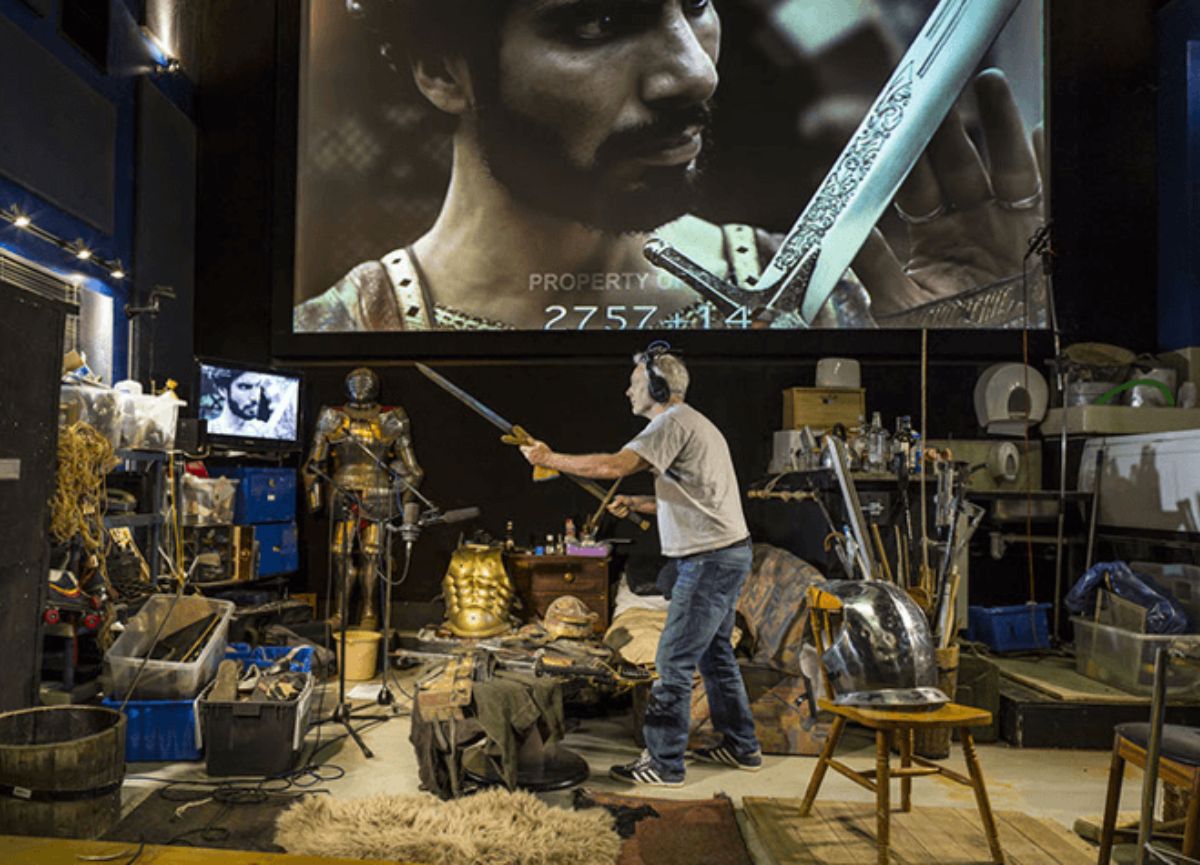In the world of film and television production, there’s a unique group of unsung heroes who bring soundscapes to life: Foley artists.
Named after Jack Foley, a pioneer in sound effects techniques during the early days of cinema, these creative professionals are responsible for recreating everyday sounds that enhance the audio experience of movies, TV shows, and video games.
Let’s dive into a typical day in the life of a Foley artist and explore the fascinating world of this often-overlooked profession.
The Foley Studio: A Playground of Sound
A Foley artist’s day begins in a specialized workspace known as a Foley stage.
This isn’t your typical recording studio – it’s a carefully designed environment equipped to capture a wide range of sounds. The space often includes:
- Foley pits: Areas that can be filled with different materials like sand, gravel, or water to simulate various environments.
- A variety of surfaces: Wood, metal, concrete, and other materials to create diverse footstep sounds.
- Viewing screens: To display the footage the Foley artists will be working on.
- An extensive collection of props: From everyday items to specialized tools, these are the instruments of a Foley artist’s trade.
Walking into a Foley studio might feel like entering a chaotic playground.
You’ll find an eclectic array of objects strewn about – car parts, shoes of every variety, clothing items, metal scraps, and countless other random paraphernalia.
This apparent mess is actually a carefully curated collection of potential sound-making tools.
The Daily Routine
Pre-Production and Planning
The day often starts with a review of the footage and a spotting session. This involves:
- Analyzing the script and scenes to identify required sound effects.
- Collaborating with the director, sound editor, and other post-production team members to determine which sounds need to be recreated.
- Creating a detailed list of all the sounds that need to be recorded.
Prop Selection and Setup
Once the needed sounds are identified, Foley artists gather the necessary props and materials.
This process requires creativity and out-of-the-box thinking. For example:
- Twisting crab legs might create the eerie movements of monsters.
- Cornstarch in a leather pouch could simulate the sound of footsteps in the snow.
- Coconut shells might be used for horse hooves.
Recording Session
The core of a Foley artist’s work involves performing and recording sounds in sync with the on-screen action. This process demands:
- Precise timing and coordination to match visual cues.
- Physical performance, often requiring repeated movements or handling various objects.
- Collaboration with Foley mixers to ensure proper sound capture.
During a recording session, Foley artists might:
- Walk on different surfaces wearing various types of shoes to create footstep sounds.
- Manipulate fabric to recreate the sound of clothing movements.
- Use unconventional items to produce unique sound effects for fantastical elements.
Multiple Takes and Fine-Tuning
Perfecting a sound often requires multiple attempts. Foley artists will:
- Perform actions repeatedly to get the timing and quality just right.
- Experiment with different props or techniques to achieve the desired effect.
- Work closely with the mixer to adjust microphone placement and recording levels.
Collaboration and Integration
Throughout the day, Foley artists collaborate with other members of the post-production team. This includes:
- Communicating with sound designers and editors to ensure the Foley work aligns with the overall sound design.
- Participating in mixing sessions to integrate Foley sounds with dialogue, music, and other audio elements.
Challenges and Skills
Being a Foley artist requires a unique set of skills and qualities:
- Creativity and Problem-Solving: Foley artists often need to invent new ways to produce sounds, especially for fantastical or non-existent elements.
- Attention to Detail: The ability to notice and recreate subtle audio nuances is crucial.
- Physical Dexterity: The job demands precise movements and the ability to handle various objects skillfully.
- Timing and Rhythm: Synchronizing sounds with on-screen action requires excellent timing and a good sense of rhythm.
- Knowledge of Acoustics: Understanding how different materials and spaces affect sound is essential.
- Adaptability: Every project brings new challenges, requiring Foley artists to constantly adapt their techniques.
The Impact of Technology
While the core of Foley art remains a hands-on, performance-based craft, technology has influenced the field:
- Digital audio workstations (DAWs) allow for more precise editing and layering of sounds.
- Sound libraries provide additional resources, though many Foley artists prefer creating sounds from scratch for authenticity.
- Advanced microphones and recording techniques enable the capturing of more nuanced sound details.
Despite these technological advancements, the human touch in Foley’s art remains irreplaceable.
The ability to interpret a scene’s emotional tone and create sounds that enhance the storytelling is a uniquely human skill.
Conclusion
A day in the life of a Foley artist is a blend of creative performance, technical skill, and meticulous attention to detail.
These sound magicians work behind the scenes to create the auditory illusions that make films, TV shows, and games come alive.
From the moment they step into their prop-filled studios to the final sync of a perfectly crafted sound effect, Foley artists play a crucial role in immersing audiences in the worlds created on screen.
Their work is a testament to the power of sound in storytelling, proving that what we hear is just as important as what we see in creating a truly engaging cinematic experience.
As technology evolves and new mediums emerge, the art of Foley continues to adapt, ensuring that the magic of sound remains an integral part of our entertainment landscape.




